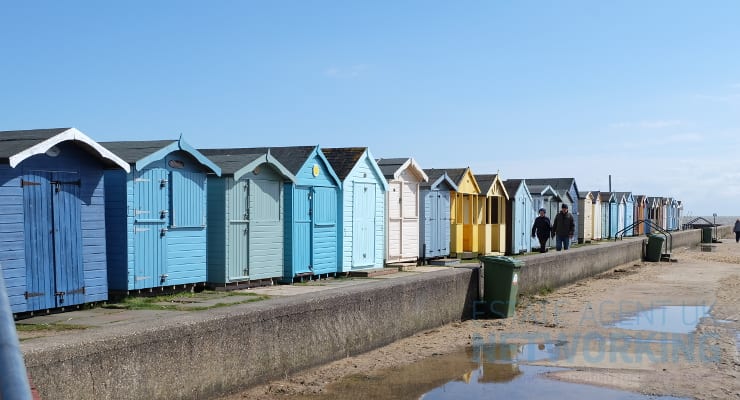Listed Buildings: Five common issues you should know about before you buy
With their unique charm and character, it’s no wonder that so many people dream of owning one of Britain’s 376,000 listed buildings. Noted for having particular historic value to the local, regional or national landscape, the National Heritage list of protected buildings includes everything from quaint, rural cottages to sweeping country estates and everything in between.
Although they might be highly desirable, historic buildings also require a high level of maintenance. They are rarely found in a perfect condition and demand expensive preservation and repair work almost constantly. If you have your heart set on owning and living in a treasured piece of British history, here are five of the most likely problems you should prepare for.
Everyday wear and tear
When you’re looking at property that has been standing for generations, it’s only to be expected that you’ll find some worn-out fixtures and décor that has seen better days. Older homes should be regularly inspected for signs of damage, particularly where features are both decorative and functional, such as damaged roof tiles or cracking render.
Historic England advocates conservation and preservation wherever possible, as maintaining existing materials is usually much easier, cheaper and effective than sourcing original period materials to make repairs. Where remedial work is required to keep a listed building looking its best, homeowners will be required to preserve the character of the property. This means using authentic materials and techniques or using the most comparable modern equivalent – grants may be awarded to help you do this.
Timber decay
An original timber frame is one of the most sought-after features in those looking for a historic home and it’s easy to see why. The natural warmth and imperfections in timber beams tell a unique story that is impossible to achieve in a new-build property. However, original woodwork can often succumb to damp, rot and distortion, particularly if it is not properly taken care of.
When you have a property survey carried out, look for any notes about the condition of the structural timbers in case they need urgent care – the most vulnerable areas will be those hidden between floors and behind render. If you can identify softness or bowing in floorboards, window frames or structural timbers without the help of a professional, you may be better off arranging a specific defect analysis to uncover the extent of the damage.
Damp problems
Another major concern with listed property is the presence of damp, although luckily this can often be remedied with relative ease. If considerable levels of damp have been discovered by a surveyor, it’s likely to be attributed to one of three causes; condensation, penetrative damp and structural damp.
Condensation can usually address by reducing the moisture inside the property. For example, ensuring that tumble-driers have a vent leading to the outside and using an extractor fan while cooking.
Penetrative damp will typically be caused by an exterior defect that is allowing rainwater to get inside. Look for (and repair) broken roof tiles, cracked render, blocked gutters and damaged window casings for issues that may be causing or exacerbating the problem.
Finally, structural damp (also known as “rising damp”) is usually caused by a damaged (or non-existent) damp-proof course in the foundations of the building. Check whether any external landscaping could be breaching the damp-proof course and allowing ground moisture to creep into the masonry.
Insulation issues
Listed buildings are often so charming and impressive thanks to their period features and unusual construction techniques that make them so different from homes being built today. Unfortunately, the differences aren’t just superficial; modern homes will nearly always feature much more energy-efficient insulation methods than those in a historic property, if the older building features any at all.
Historic materials don’t mix well with modern insulation, so to boost the energy-efficiency of a listed building, it’s not as simple as adding a layer of wool into the loft or in the cavity of a suspended floor. Wall insulation prevents the house from “breathing” (which causes damp) and installing double-glazing will have to be considered on a pane-by-pane basis, depending on if the windows contribute to the building’s historic interest. If you want to make any changes you will need to speak to a specialist surveyor or your Conservation Officer for guidance.
Unauthorised alterations
As outlined above, owners of listed buildings have a legal obligation to maintain the integrity and character of their property. If any changes are required, explicit consent and direction will need to be obtained from the local Conservation Officer, or else homeowners can face severe penalties that include fines and imprisonment.
There’s no time limit on the liability for these unauthorised changes and if previous owners of a listed building have made modifications without consent, you, as the current owner, will be held responsible. It’s therefore essential that your surveyor and solicitor investigate any changes to the property before you complete your purchase to make sure that they have been carried out legally.
It’s undeniable that listed buildings come with a whole host of possible defects and important considerations. However, if you’ve read this far then the chances are that you’re already committed to living in one of these beautiful and unique pieces of history. Just remember to trust your instincts, invest in professional advice and prepare to give your home plenty of TLC.







